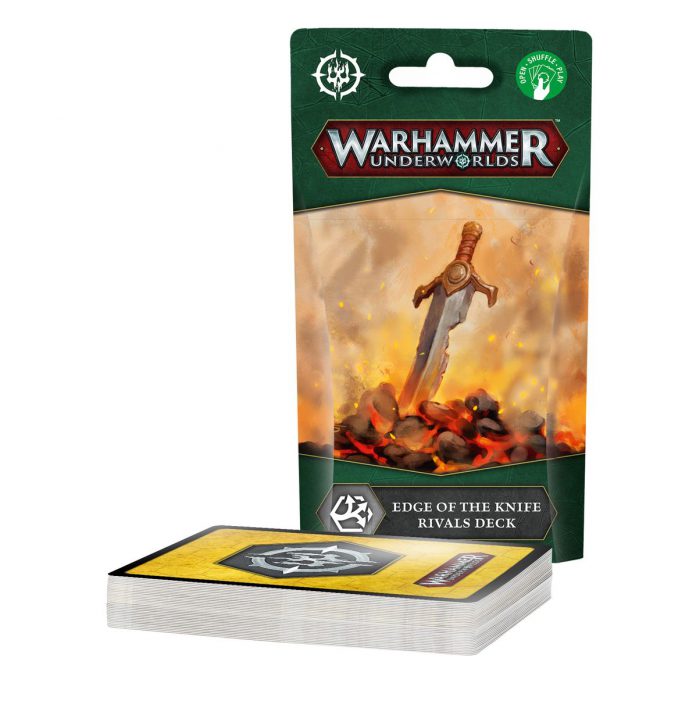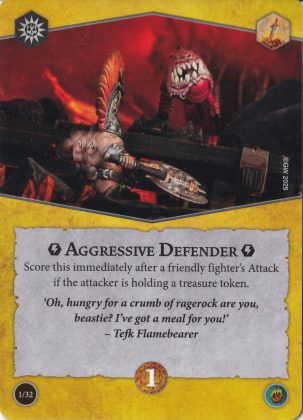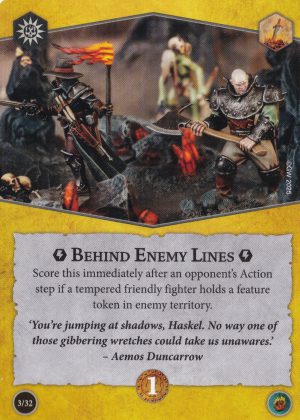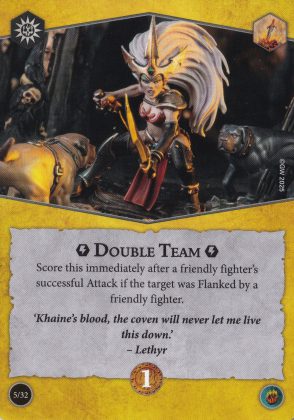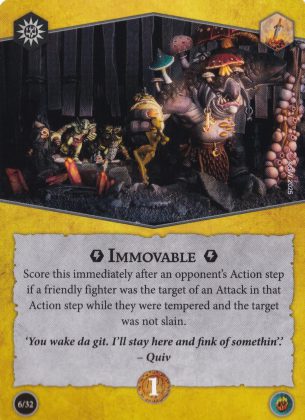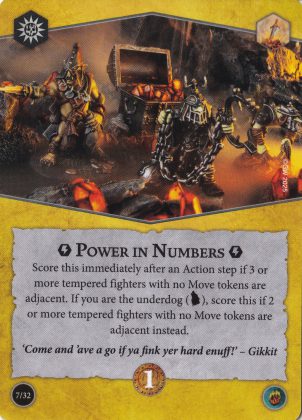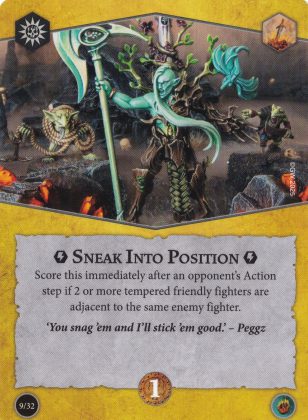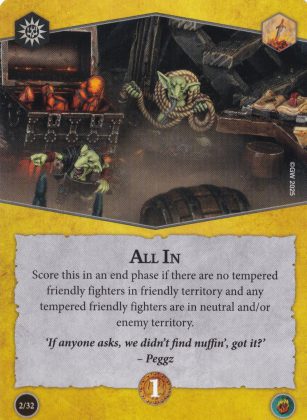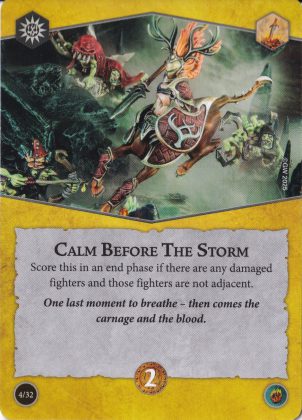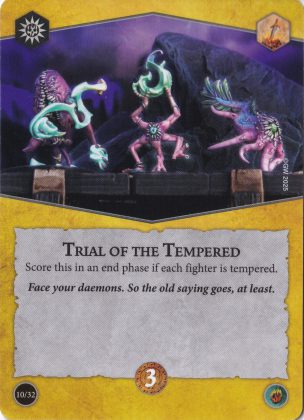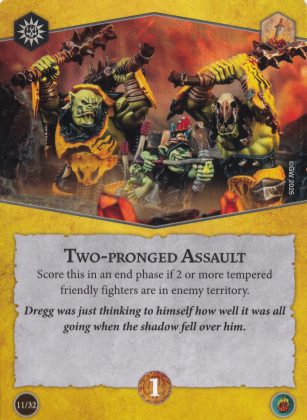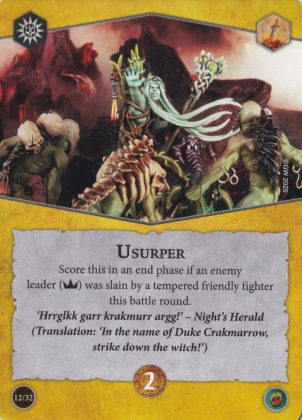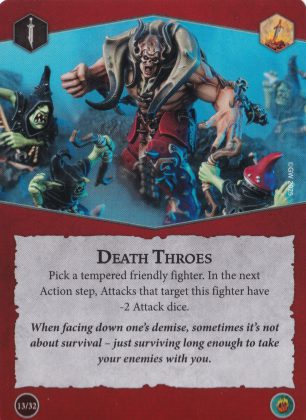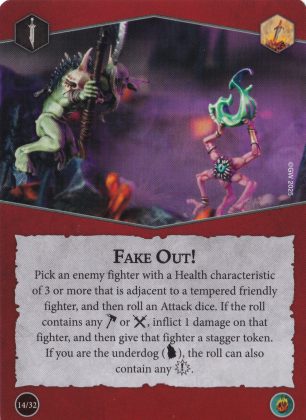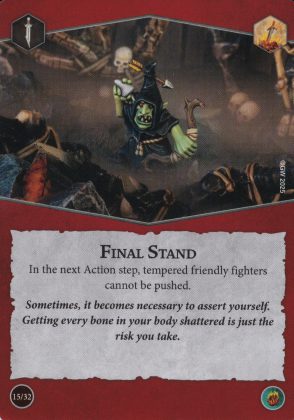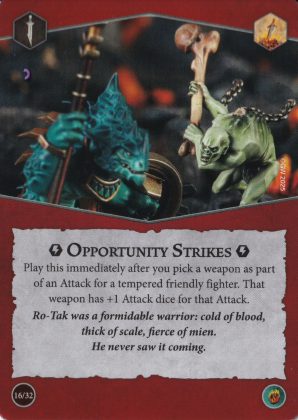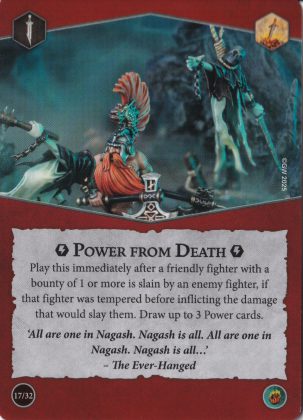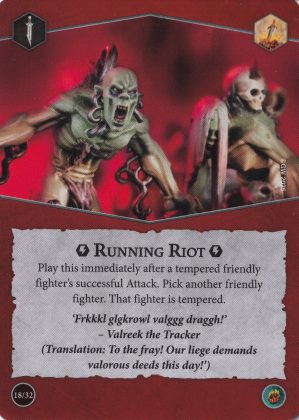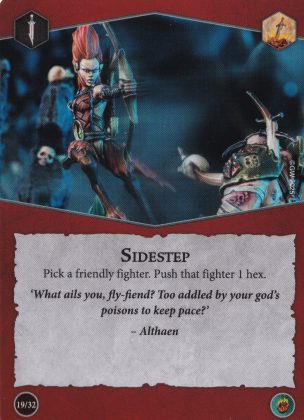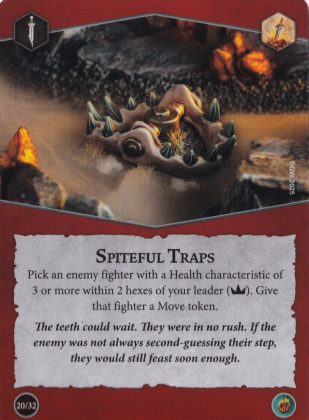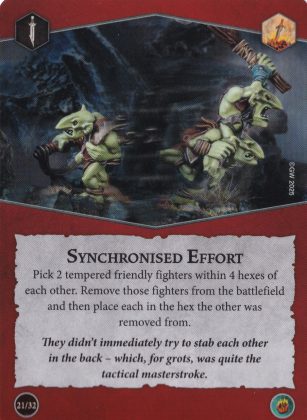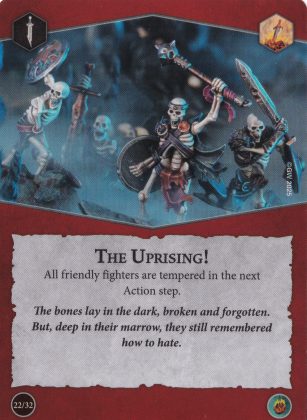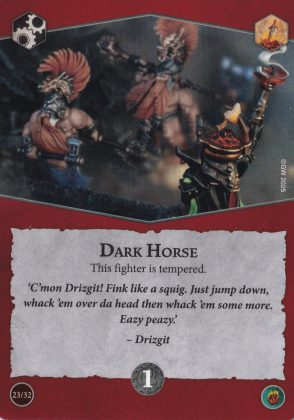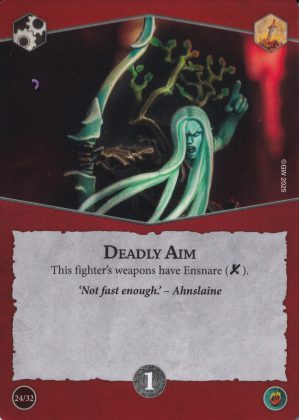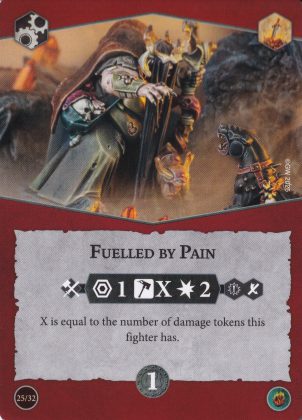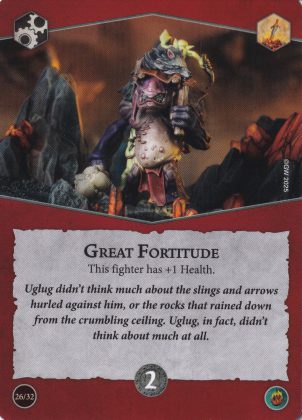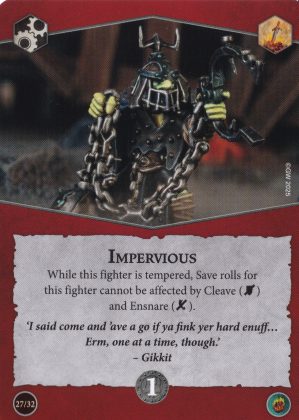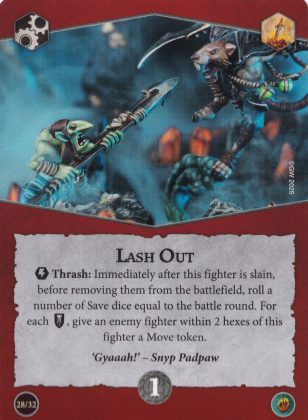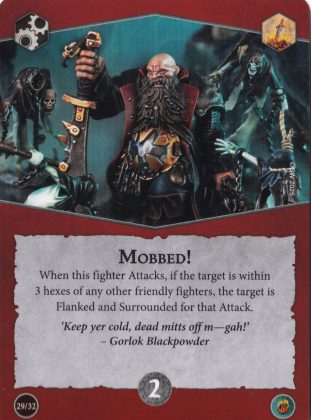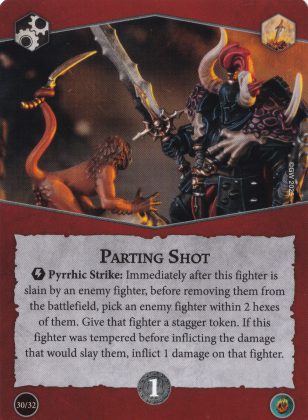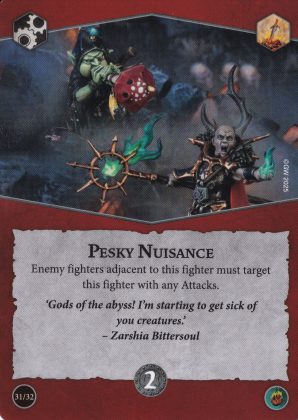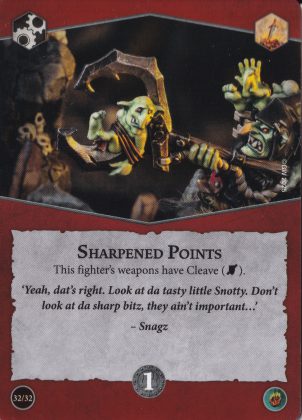Another lovely Underworlds preorder day is here. Not only do we get a new warband with Borgit’s Beastgrabbaz, but Edge of the Knife is also a brand new Rivals deck that brings the total number of decks to choose from to seven. If you want to read about the goblins, you can do so here. For now though, let’s take a look at the seventh Rivals deck in this new edition of Warhammer Underworlds. Thanks to Games Workshop for providing this Rivals deck for us to review.

In this deck review I am going to talk about the theme of the new Edge of the Knife deck, take a look at each of the cards within it, highlight a few of the cards that I am personally interested in, consider warbands that can pair well with the deck in both Rivals and Nemesis, and finally look at some other Rivals decks that can combine with Edge of the Knife for a solid Nemesis option.
Games Workshop classifies this deck as being in the Flex style, much like the accompanying warband that’s releasing alongside it. It’s a deck that asks the pilot to balance risk and reward either by leveraging inherently fragile fighters or intentionally taking damage on your beefier fighters to put them into the threshold of being tempered. Hold on. Tempered? What does that mean?
Knife to Know You
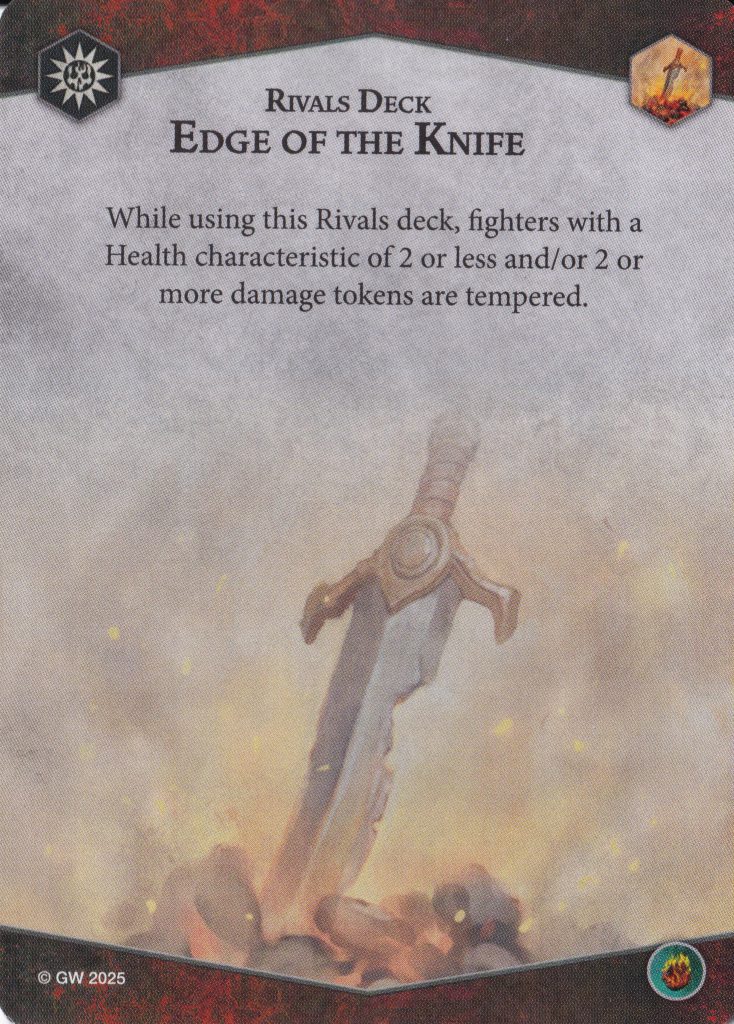
Edge of the Knife is the second deck in this edition to have a plot card, although it only barely qualifies as such. This does mean that it cannot pair with Countdown to Cataclysm (or any future plot card decks) for Nemesis, which is a downside since CtC has been showing up fairly often as a supportive deck that can work for almost any game plan. As for what the plot card itself does… well, it doesn’t really do anything. It just gives you a new term (“tempered fighters”) and defines it (any fighters with a health characteristic equal to or less than 2 and/or any fighter with 2 or more damage tokens). Many of the cards in this deck are going to care about tempered fighters, so this seems like it’s mostly a way of saving text space on the cards or potentially being used as a balance lever to specifically prevent the deck from pairing with other plot decks in Nemesis.
Despite only being a single sentence, the text on the plot card serves to focus what warbands are going to excel with this deck and how useful the individual cards within it will be. This makes me get in the headspace of considering warbands with multiple 2 health fighters or, to a lesser extent, elite warbands that can afford to have their fighters damaged (perhaps even with ways to force the damage) and still keep them in the action. The sweet spot will be warbands consisting mostly of dinky 2 health fighters with one, often the leader, bigger fighter that can become tempered through damage or the power cards within the deck.
Speaking of the cards, let’s take a look at them. We’ll start with the surge objectives, followed by the end phase objectives, and then finally the power cards starting with ploys and ending with upgrades.
Objectives
To get an idea of how big of a deal tempered is in this deck, 9 of the 12 objectives require tempered fighters to score.
Starting us off with a reprint from the Emberstone Sentinels deck, Aggressive Defender is also one of the few objectives that doesn’t care about tempered fighters. Like its counterpart in Emberstone Sentinels, this is a reliable objective to score (the attack doesn’t need to be successful!) if you have any desire to stand on treasure tokens and/or have fighters with ranged attacks who can easily stand on a treasure token and take some pot shots.
Behind Enemy Lines encourages you to push forward into enemy territory. Conveniently, it only requires holding a feature token, not specifically a treasure token. Delving plans rejoice, this is still a solid surge option. Like most of the “hold a token” surges, this does score after your opponent’s action step. So, if you’re throwing a weak fighter onto a token, this might be a little riskier than a simple hold surge because of that requirement.
Double Team doesn’t specifically require a tempered fighters, but it does lean into the hoard style theme that many of these cards have. Setting up flanked/surrounded situations with the physically weaker fighters is one way to help them punch up, and this rewards you for putting in that effort.
Immovable is going to feel so bad when it sits in your hand due to dice variance, but I think it has potential for some warbands with multiple weaker fighters on 2 save dice, especially if you can set up things like cover, flanked/surrounded, or putting them on guard. It’s also extra punishing for your opponent to try and finish off one of your larger fighters (who has become tempered from damage) if they fail.
It feels like Power in Numbers is going to only go into a very narrow set of decks – warbands that start with a large number of tempered fighters are going to make this easier to score, but warbands that don’t have 4-5 fighters that start the game tempered will turn this into an awkward hoop to jump through. Warbands with movement abilities like Sepulchral Guard or Thorns of the Briar Queen make it almost trivial, provided you draw it before your fighters are slain.
Sneak Into Position is the final surge objective. Like Power in Numbers, how reasonable it feels is going to be based on your warband’s composition. You can score it by charging two tempered fighters into an enemy after two turns, but only if the second one doesn’t finish the target off and both of your fighters survive long enough. It’s going to be more likely that you score it from using warscroll movement tricks like Kainan’s Mortek Advance or Zarbag’s Scurry.
Our first end phase objective is All In, and it definitely lines up with the name. Unlike some of the previous surges, this is going to be harder for a warband to score if they have a large amount of tempered fighters from the start. It’s one that feels better suited for an elite warband that plans to invade and take damage in the process.
Calm Before the Storm is a more appealing 2 glory reward, but you’re going to have to pack some power step pushes/teleports/moves in order to make it a reliable score, especially if your opponent is aware and tries to play around it. Alternatively, you can just have fighters that are so squishy that they die in one hit and make sure you don’t spread out damage amongst the enemy fighters.
An easier objective to score in the form of Risky Position can be one of those near-guaranteed 1 glory objectives provided your warband can do something like the Grymwatch’s raising or Hexbane’s free moves with the dogs. It’s nice to have a few of these safe, easy end phases because you can’t always pack your deck with the 2-3 glory ones (because there simply aren’t enough!).
Trial of the Tempered is the build-around, big payoff of the deck. All of the 3+ glory end phase objectives in the game so far are quite demanding in that they put steep requirements on you scoring them, and often allow for fairly easy counterplay on the opponent’s side of the game to prevent you from cashing them in. This is no different, but I like how the method of achieving it will vary wildly depending on what warband your opponent brings. Are you up against Zarbag’s Gitz? Well good news, friend. Are you instead playing against the Emberwatch? That’s going to require more work, and likely force you to split your damage among the enemy fighters if you want to score this.
Two-Pronged Assault is incredibly bizarre to me, because it’s literally just Risky Position but requires one more fighter to score it. It’s not even worth more glory for the extra requirement it places on you. You’ll never take this over Risky Position, and in Nemesis I don’t know how often you’ll wind up with a deck that wants both of those 1 glory end phases. Odd choice, Games Workshop.
The final objective to cover is Usurper, which has some demanding hoops to jump through but rewards you with another 2 glory if you can manage it. If you don’t have it in your hand you’re going to be incentivized to not kill the enemy leader in hopes of drawing this at the right time. If the enemy leader dies too early (or never dies), this can’t score. If you kill the enemy leader with a non-tempered fighter, this can’t score. There are a lot of rakes you can step on when trying to set up for Usurper.
Objective Thoughts
The surges in particular are fairly generous, especially if you’re leaning into the tempered theme with your warband choice. I think the weakness here are the end phase objectives, particularly the ones worth 2+ glory – Usurper can tie your hands while playing, Calm Before the Storm allows the opponent to influence your scoring capability highly, and Trial of the Tempered is going to depend a lot on who you get paired into. None of these are bad per say, but they are going to force you to work harder than some other decks will for the same payoffs.
Power Cards
Taking a quick look at the ploys and upgrades shows that 8/10 ploys care about tempered fighters while only 3/10 upgrades mention tempered in their text (and one of those simply makes the upgraded fighter count as tempered). Interestingly, a few of these are going to lean more towards the “big fighters taking 2+ damage” method of becoming tempered which seemed to be a very minor consideration in the objectives.
Ploys
Let’s start off with a banger of a card. Death Throes is one of the very few ways to reduce the number of dice your opponent has on their attacks, and it’s a whopping -2. Sure, you have to use it on a tempered fighter, but as we saw in the objectives and will see with more cards, there are plenty of times where your opponent is going to want to kill one of your fighters and this is such a hefty skew in your favor that often times it’s going to effectively read “this fighter can’t be attacked next turn” because your opponent won’t want to waste a precious turn rolling 1-2 dice.
Fake Out! is one of those fun cards that ends with punctuation and makes my text editor really hate me. There are a few conditions and a dice roll before you can get the benefit from this card, but considering the benefit is a ping that doesn’t care about being vulnerable and a stagger, that can be tempting to set up. If you can wait to fire it off while you are the underdog, it bumps the success rate up from 50% to 67%. I’m inclined to think this isn’t going to be an efficient card slots most of the time, but the payoff if you can swing it is substantial.
The Uprising! continues the trend of exclamatory card names and is the first of the power cards that can turn your fighters into tempered fighters. This only lasts for a single action step, but it does apply to your entire warband which can assist in scoring some of the objectives mentioned above as well as allow you to take advantage of some of the really strong power cards that are normally (ahem) tempered behind their tempered requirements.
Speaking of powerful cards limited to tempered fighters, we have Synchronized Effort. Confusion is an incredibly strong card already, so what if we jacked the range up to four times the amount? Sure, you can’t swap with an enemy fighter but being able to do a switcheroo with two of your fighters can help dramatically extend a charge range, protect a charged fighter, or just deliver an unexpectedly tempered Mollog or Kainan into the opponent’s territory without a charge token (provided you pair it up with things like The Uprising!).
Spiteful Traps is fun and reminiscent of some of the more obnoxious, skill testing cards in the previous edition (positive connotation). It does require your leader to get into the danger zone, and depending on your warband that might be more or less desirable, but it can be used to really mess with warbands that want to be charging if you throw it onto one of their beaters before they get a chance to make a charge. Be mindful that if they have an attack that has a range greater than 1 hex, they can still bop your leader, but often times it will be a less damaging attack than what they could do from being adjacent.
Sidestep is good. You’re never going to be sad to have it in your deck, and in Nemesis if you have the option to take it, you’re going to take it. Simple as that.
Running Riot is another way to grant the tempered status to one of your fighters. Unlike The Uprising!, it has conditions to use it but also unlike the other card, this lasts for the rest of the game. If your warband is mostly tempered fighters with one or two larger ones (Kainan, Blackpowder, etc.) then this can be a useful way to suddenly unlock hyper mode on your big fighter without having to take any damage.
Drawing cards is great and cool, and Power from Death lets you draw 3*. Yes, you have to have a fighter be slain, your fighters has to have had 1+ bounty, and it has to have been tempered when it died but for the right kind of warband (i.e. the kind that’s going to even look at this deck) that’s a slam dunk. I’m salivating over the amount of cards Zondara can draw with this deck…
Opportunity Strikes is a variation of the fairly common + attack dice ploy. Fitting the theme of this deck, it’s only going to work for your tempered fighters, but that’s still going to be good enough to warrant inclusion in any warband that would consider Edge of the Knife.
The final ploy is Final Stand and it is also a twist on a common card type. How useful this card will be is going to depend on your game plan. If you want to hold treasures (or are just really picky about where your fighters are) then it’s going to come in quite handy and can effectively be a second copy of Hold the Line! from Emberstone Sentinels if you go that route. The only downside is that by definition, tempered fighters are going to be more vulnerable than average so not being able to be pushed isn’t as useful when you can just be killed. It’s still a solid tool to have, though.
Upgrades
Dark Horse is the last way this deck has to grant the tempered status to one of your fighters, and it’s also the most straightforward. Just apply the upgrade and you’re done. Eazy peazy, just as Drizgit says.
Deadly Aim and Sharpened Points are similar enough that I’m lumping them together, alphabetical order be damned. These are both great accuracy boosting upgrades that don’t rely on your fighters being tempered, and they’re the stronger version of these types of effects because they apply to all of a fighter’s weapons, not just their melee weapons. Cleave is going to mathematically be the stronger effect just because shields are better than dodges, but having the flexibility of both of these cards being in the deck is nice.
Fueled by Pain is a funky card that absolutely wants to go on a beefier fighter. The rules state that a characteristic can’t go below 1, so even if a fighter has no damage tokens it’s still going to be able to roll one attack dice with this attack (but that’s awful, don’t do that). That said, a fighter that has enough health to crank this up to 3+ dice on the attack often has a built in melee profile that’s already better than this, so it’s going to be a very niche card. Grandfather’s Gardeners are one warband that might be able to take advantage of this, simply because they’re more likely to survive getting some damage and having an attack that isn’t tied into their plague tracker value can be helpful. If you have any better ideas for this, I’d genuinely like to know.
Great Fortitude is another rock solid power card to have access to in your deck, and this one has some flavor text that I can really relate to so it’s now my favorite version of this card. You do have to be wary of throwing this onto a 2 health fighter and suddenly making them not tempered, though.
As mentioned earlier, having cleave and/or ensnare are large boosts to accuracy in this edition, and Impervious lets one of your fighters ignore those weapon runemarks entirely (provided your fighter is tempered). It’s extra helpful in letting you score some of the objectives that require your tempered fighters to survive through opponent’s turns without dying.
Lash Out plays in the same territory as Spiteful Traps and gives the deck an interesting little mini-theme of handing out move tokens. This one is going to require more set up, planning, and luck to pull off though. You have to place the upgrade on a fighter, then your opponent has to willingly attack the fighter, and then you have to both roll well enough and hope there are targets within range. I don’t think using this in the “fair” manner is going to gain much use, but throwing it on something like Tik Tik and then blowing him up with Kaboom! feels appropriate.
One of my favorite upgrades in the deck is Mobbed! It has an expensive cost of 2 glory, but gaining a massive boost in accuracy on the upgraded fighter’s attacks can be game changing. The rest of the deck isn’t particularly appealing for Headsmen, but boy would the Wielder love this. Warbands that rely on rolling larger amounts of dice but are hampered by being on swords, such as the Skinnerkin, will gain a lot from Mobbed!
Parting Shot is yet another card that wants one of your fighters to die and I think it’s the best of the bunch. There’s no dice variance here and the only condition is a fairly easy one to meet unless your opponent manages to snipe your fighters from 3+ hexes away. The extra flexibility in being able to stagger and ping any enemy in range, not just the one who made the kill, is icing on the cake.
Pesky Nuisance is the final card for this deck review. At first blush, it made me think nof Fury of Aqshy from Reckless Fury (the upgrade that was so busted it was added to the Forbidden list), but I don’t think this is going to be anywhere near that level. Not only is it more expensive at 2 glory, but an adjacent enemy fighter can just charge away from your upgraded fighter and hit whatever they want. Pesky Nuisance can work as a sort of bodyguard ability to protect one particular fighter (provided you can limit your opponent’s landing hexes for a charge), but it’s not really going to be able to draw attacks into your most durable fighter in a lot of situations.
Jake’s Picks
Behind Enemy Lines: I want to highlight this surge objective because I like the style of play it encourages. Specifically that it forces interaction by emphasizing fighting on/around treasures in enemy territory. It is fairly reliable but has still has the potential for counterplay on the opponent’s side.
Calm Before the Storm: This end phase objectives is going to present an interesting positioning and target priority puzzle that will play out differently depending on the warbands on both sides. Can you keep the wounded fighters separate? Is it going to be easier to kill off wounded fighters instead?
Mobbed!: I’m fond of the big bruiser style warbands (Kainan, Mollog, Headsmen) and this helps those fighters become substantially more accurate. A disproportionate amount of power is placed on those single fighters because the rest of the warband tends to be frail, pillow fisted, and/or inaccurate goobers and being able to make the big fighters’ activations more reliable is going to be useful.
Power from Death: It’s not quite Ancestral Recall from Magic: the Gathering, but it’s a good impression. If your opponent wants you to stop from leveraging all the tempered scoring cards in this deck, they’re likely going to attack your fighters. This helps to lessen the sting of losing one by drawing up to 15% of your power deck in one go.
Walking the Edge
Broadly speaking, I think the warbands that are mostly populated by fighters who start the game tempered are going to be in the best position to take advantage of this deck. There’s an argument that you could go for the beefier, more elite warbands and try to float damage on them, but you are either (a) hoping your opponent helps you out or (b) planning to damage your own fighters which goes from “a game plan” to “trying to be too clever and tripping over your own feet” pretty quickly.
Looking at organized play legal warbands that have three or more fighters who start out tempered gives us the following lists by grand alliance:
Chaos: nothing… technically*
Death: Thorns of the Briar Queen, Sepulchral Guard, Grymwatch, Kainan’s Reapers, Zondara’s Gravebreakers
Destruction: Blackpowder’s Buccaneers, Zarbag’s Gitz
Order: Hexbane’s Hunters
*While Grandfather’s Gardeners don’t fit the criteria outlined above, it’s an interesting one that can be a good fit due to Imperturbable ensuring your fighters are more likely to stick around once they reach the tempered state from damage.
Overall, I think it’s great that out of all these warbands listed, only Zarbag’s Gitz are currently winning multiple events (that I’ve seen at least). This deck is giving more options to the middle of the pack and not necessarily to the elite aggro which were dominating the field upon Embergard’s initial release.
Of these, I’m particularly interested to try Zondara’s Gravebreakers and Thorns of the Briar Queen with this deck – the former for Nemesis the latter for either Rivals or Nemesis. I’m also realizing I keep naming Thorns in all of my reviews so I really should dust them off and play them more.
Deck Pairings for Nemesis
As a reminder, Countdown to Cataclysm isn’t a valid pairing with Edge of the Knife due to them both having plot cards.
Wrack and Ruin’s pings are already good on their own, but you can use them to zap enemy fighters and make them tempered for help in scoring Trial of the Tempered. If you choose to go the route of elite fighters and attempt to get enough damage on them to turn them tempered, that can help break parity on the symmetrical lings present in this deck as well.
Many of these high quantity, low value fighter warbands mean towards treasure holding, so Emberstone Sentinels is a welcome source of objectives and strong power cards around this tactic. Along the same vein, Pillage and Plunder can reward your fragile fighters with cover hexes and offer more avenues of scoring other than trying to go toe to toe with enemies who may individually outclass your fighters.
Maybe this is when I take Reckless Fury with Thorns of the Briar Queen, add in Edge of the Knife, and go for ghost queen aggro. Hm…
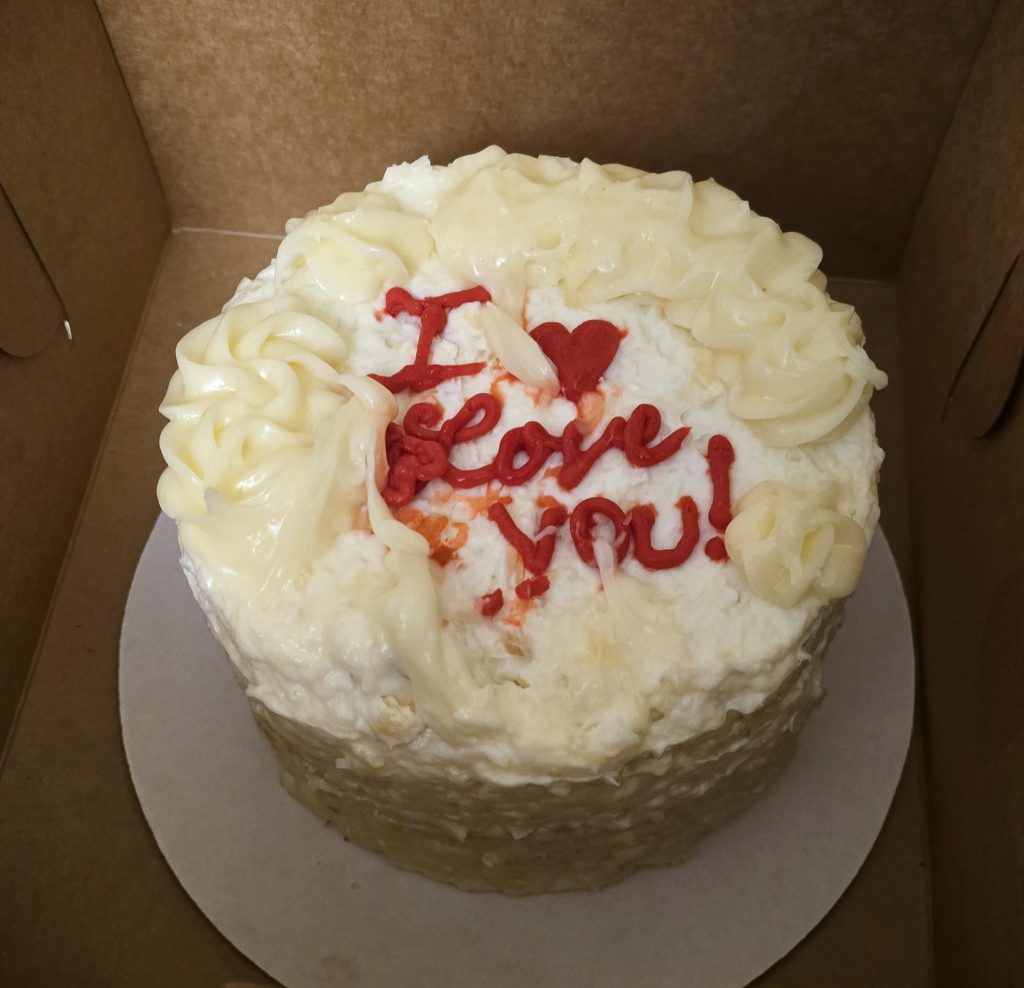
Unrelated to the actual releases, I want to share this cake that I transported up the East Coast on two separate flights. It’s my wife’s favorite cake, and she’s my favorite person, so it only seemed fair to figure out how to get through TSA with a cake in a cooler (spoiler: it was kind of easy, especially since the agent knew the bakery it came from). And now, it’s time to introduce this cake to… the edge of a knife. Because it’s getting eaten.
Have any questions or feedback? Drop us a note in the comments below or email us at contact@goonhammer.com. Want articles like this linked in your inbox every Monday morning? Sign up for our newsletter. And don’t forget that you can support us on Patreon for backer rewards like early video content, Administratum access, an ad-free experience on our website and more.
